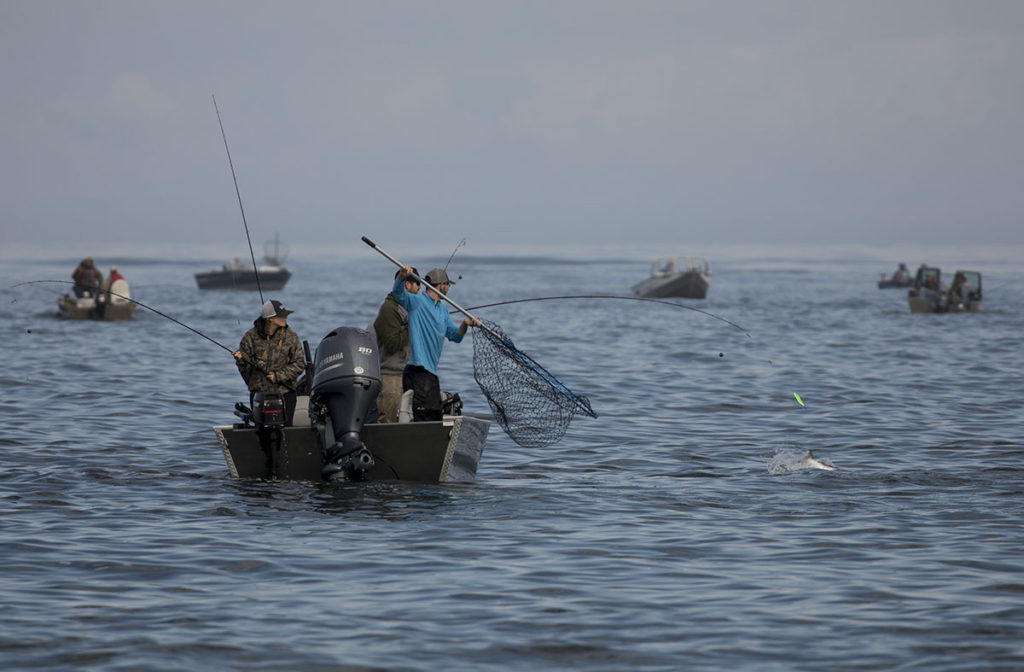
It’s official — the Oregon Department of Fish and Wildlife has approved rules to allow a limited fishery for wild coho salmon on four streams in Lincoln County.
Fishing for fall Chinook salmon in most coastal bays and rivers opened Aug. 1. Now, there will be an opportunity to keep one mid-coast Oregon coho, which is listed as threatened under the federal Endangered Species Act.
Improved ocean conditions are allowing a very limited catch of wild coho salmon in four mid-coast streams for two- to four-week periods in September, October or November. Except for a one-fish limit in the Siletz River last year, keeping of any mid-coast wild coho salmon has been prohibited.
ODFW staff, with support from NOAA Fisheries, set rules this month for very limited two- to four-week coho seasons on the Alsea, Yaquina and Siletz rivers – and for the first time since 2015 – coho catches on Beaver Creek north of Seal Rock.
Coho returning this year went to sea last year, when ocean conditions had improved considerably, so even more basins are open this year — a definite improvement from 2016-2020 when all wild coho retention was closed in coastal rivers.
This year’s wild coho abundance is still less than the high returns seen from 2008-2014, so not all basins are open for retention.
The Alsea River and Beaver Creek have shorter seasons, but other basins are open for wild coho retention from Sept. 15 to Oct. 15.
Anglers should check the regulation updates for their zone for the open season, open areas, and bag limits of the basins they will be fishing.
All open rivers will have a season bag limit of one wild adult coho from that basin and under permanent rules and no more than five wild adult coho salmon may be taken in aggregate from all coastal rivers in 2022.
Regulations allow one wild jack coho to be harvested on days when wild coho retention is allowed within a basin.
Fall Chinook have a different life cycle than coho and those returning this year went to sea at a time when ocean conditions were still poor.
Anglers fishing for salmon during the fall should know how to tell the difference between coho vs Chinook. There is a tutorial on the ODFW website.
Alsea River, Sept. 15–30: Retention of wild coho is only allowed from the mouth upstream to the U.S. Forest Service’s River Edge boat landing. One wild adult coho may be retained for the season. One wild coho jack may be retained per day as part of the daily jack bag limit.
Beaver Creek, Nov. 1–15: Retention of wild coho is only allowed from the walking bridge at Ona Beach State Park upstream to the confluence of Beaver Creek and South Fork Beaver Creek. One wild adult coho may be retained for the season. One wild coho jack may be retained per day as part of the daily jack bag limit.
Siletz River, Sept 15 to Oct 6: Retention of wild coho is only allowed from the mouth upstream to an ODFW marker sign approximately 1,200 feet upstream of the Ojalla Bridge, and Oct 7-15 from the mouth upstream to the Illahee boat ramp. One wild adult coho may be retained from Sept 15 to Oct 15. One wild coho jack may be retained per day as part of the daily jack bag limit.
Yaquina River and Big Elk Creek, Sept. 15 to Oct 15: Retention of wild coho is only allowed in the Yaquina River from the mouth upstream to Simpson Creek and in Big Elk Creek upstream to Bear Creek. One wild adult coho may be retained for the season. One wild coho jack may be retained per day as part of the daily jack bag limit.



Heaven knows we should allow them too good a chance to repopulate, depriving us of the freedom to keep them on the edge like a 16th century British beaver.